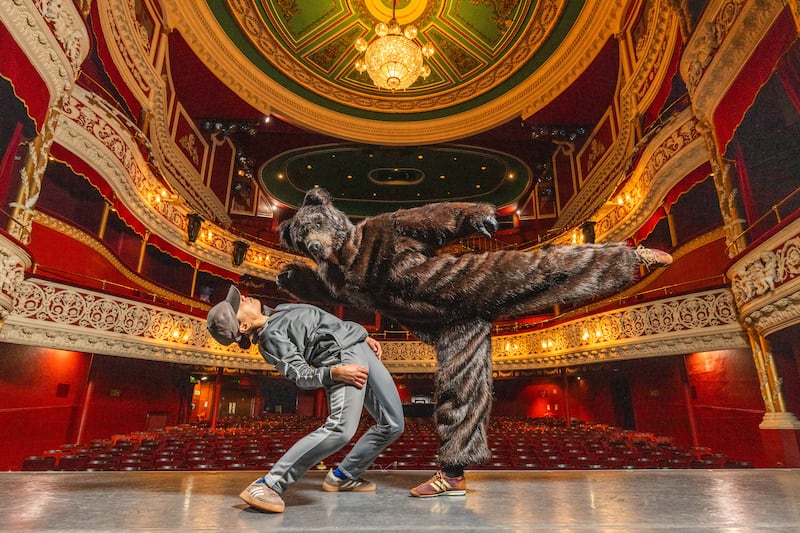You might think you know Shakespeare, but do you really? As the American actor Anne Gridley will tell you, you probably don’t. In 2009, Nature Theater of Oklahoma, of which she was a founder member, staged Romeo and Juliet, only its version was subtitled Just as You Misremembered It. The sparkling play was based on the memories of people phoned up on spec and asked to recall the story of theatre’s most famous lovers.
“Did you ever see West Side Story? It’s the same story, but with Puerto Ricans and, like, Irish-Americans,” one respondent explained. “Romeo gets in a fight with some guy with a very flourishy name, like Euristhepis or something like that,” recalled another. Yet another segued into thoughts about Anna Nicole Smith, Princess Diana and the Bahamas.
The idea reminds us not only of the connective yet flawed nature of our memories but also of the way drama can embed itself in our minds yet then come out subtly – or sometimes substantially – altered. If you’re hazy on Romeo and Juliet, The Winter’s Tale is one of those Shakespeare plays that you probably don’t really remember at all. Isn’t it the one with a bear? Wasn’t there something about a statue come to life? Both of these things are true, yet there is so much more.
Gridley is in Dublin, rehearsing at the DanceHouse studios with an Irish and international cast assembled by Pan Pan, one of Ireland’s most stalwartly innovative theatre companies. They are there to create a new take on The Winter’s Tale – this time, according to its director, Gavin Quinn, retold from the perspective of the bear.
READ MORE
The animal features in the original text in one line that happens to be theatre’s most famous stage direction – “Exit, pursued by a bear” – which in act three of the play implies the end of Antigonus, adviser to King Leontes – and is now the title of Pan Pan’s production.
“At the time,” says Quinn, “bear baiting would have been common in London. While you were watching The Winter’s Tale you might have heard the horrible sounds of bears being attacked by dogs further along the river. So our idea was: imagine if the actors were bears who started playing humans.”

The idea might initially seem absurd, but suddenly it opens up a world of connections – about how close we are to our animal nature yet how separated from it by civilisation, for example, and then about the cracks in character, essence and being that such separations produce. “What would be the effect if an animal pretended to be human?” Quinn asks. “Different moods are created.”
I’m looking in during a break in rehearsals. John Scott, who is one of the cast, obligingly puts on one of the play’s three bear costumes, to give a taste of things to come. The dancer and choreographer, who is also artistic director of Irish Modern Dance Theatre, worked with Pan Pan previously, choreographing its production of Samuel Beckett’s Quad in 2014. “They are very warm,” Gridley notes of the bear suits. “But the weather’s getting colder,” Scott deadpans. “They’re very comfortable.”
The cast of Exit, Pursued by a Bear, which also includes Mollyanna Ennis, Faith Jones, Manuel Zschunke and Salma Ataya, multitasks, adopting several roles each. As Scott’s presence confirms, there is plenty of movement and dance within the playing out of the drama.
One of Shakespeare’s final plays, The Winter’s Tale is regarded as one of his so-called problem plays. It was first performed in 1611, soon after another of the periodic closures of London’s theatres by outbreaks of plague.
It is often said that tragedy and comedy live close together, but in The Winter’s Tale the accommodation is somewhat different: tragedy for three acts, then something approaching comedy for the final two. Briefly: Leontes takes a sudden fit of jealousy, accuses his heavily pregnant wife, Hermione, of infidelity with his best friend, Polixenes. She dies, and he sends his newborn daughter, Perdita, to exile and probable death.
I had just had a major family death a couple of months earlier, and I wasn’t actually dealing with it because I was worrying about my parents dealing with it. Bringing Hermione back to life hit me deeper
— John Scott
That’s the tragedy part. But she survives to be raised by shepherds. Sixteen years later she falls in love with Polixenes’s son. Of course she does: this is Shakespeare. Returning home after a series of improbable events, Perdita then finds, most improbably of all, that the statue, which is of Hermione, proves to be the dead queen herself, who comes back to life, and (almost) all live happily ever after.
With jealousy, warped power, love, mistaken identity and betrayal, The Winter’s Tale seems to revisit and restore happy endings to the plots of some of Shakespeare’s most famous tragedies. Othello, King Lear, Macbeth and Hamlet are all echoed. But if Shakespeare is retelling himself, how many different ways can we tell and retell Shakespeare? And why bother? Surely it has all been said and done.
Not quite. While the words may not have changed, our own times throw up different values, different concerns, even as the underlying dramas of humanity – love, fear, jealousy, faith, power, death and greed – remain the same. And between those words come vast oceans of possibility for actors and directors, in movement, music, glances, pauses. Even the words themselves can be differently inflected.
It is not Pan Pan’s first Shakespeare. The company’s more than 30-year history has included the Irish Times Irish Theatre Award-winning The Rehearsal, Playing the Dane (based on Hamlet, of course) in 2010, Everyone Is King Lear in His Own Home, from 2012, and 2017′s take on The Tempest with Theater Bonn. Twenty years ago, when it explored Macbeth with Mac-Beth 7, the company asked the question: why? Why go to see a production of Macbeth, or of any Shakespeare play, in the 21st century?
Its conclusion at the time, which is perhaps even more valid today, is that live performance liberates, that “the reaction of the audience to the performance contributes to life” and that the multiple potentials of a piece of theatre – to show triumph and disaster, excitement and suspense, laughter, tears and indignation – are all present on stage, as opposed to being more coldly available through the analysis of study.

One intriguing aspect about the timing this time is that we too have recently experienced the closure of theatres, along with pretty much everything else, in our generation’s version of the great plague. Is there a direct influence? “I don’t think so,” says Quinn. “I started working on this about 11 years ago.” He goes on to talk about how our own memories of the Covid-19 pandemic have changed and become slippery themselves. “It’s almost too soon for the processes of theatre, which are slow, to try and find out what’s really worth writing about.”
Still, I think that some of the strangenesses of The Winter’s Tale can be explained by the plague-related theatre closures of that time, the first of which had happened back in 1593. By bringing a bear to mind in just one line, Shakespeare is showing us everything that drama and storytelling can do. It can conjure bears, move setting at the drop of a line, even bring the dead back to life. It is as if he is saying to his audiences: “Look at all you almost lost. Surely this is something worth protecting.”
Perhaps this also explains the seemingly odd structure of the play. Drama can bring a positive resolution even after the most appalling tragedies, and that is something we crave through story. Just look at the happy endings after the strings of murders that are the staple of cosy TV detective dramas.
Played well, the denouement of The Winter’s Tale can give us an astonishingly powerful, if improbable, resolution. Scott recalls seeing the play in New York in 2000, when the plague fear at the time was prompted by West Nile virus, and an idea had gathered momentum that you might die from a mosquito bite in the heart of Central Park.
“I had just had a major family death a couple of months earlier, and I wasn’t actually dealing with it because I was worrying about my parents dealing with it, so I was taking care of them,” he says. “Bringing Hermione back to life hit me deeper, because I was carrying this covered-up bereavement.”
One of the roles Gridley takes is Hermione. So what is it like to come back to life? “It’s profound,” she says. “Practically, it’s difficult, but the audience doesn’t need to know that. I mean, it’s an incredible theatrical device. It’s strange, and I understand what John is saying about bereavement.
“Don’t we all wish that the people that we have loved and lost might just break out of their lost form, and come back and say something to us, anything at all? It is a beautiful dream that we get to make true.”
Exit, Pursued by a Bear, staged by Pan Pan, is at the Whyte Recital Hall, at the Royal Irish Academy of Music, from Thursday, October 3rd, to Sunday, October 13th, as part of Dublin Theatre Festival




















